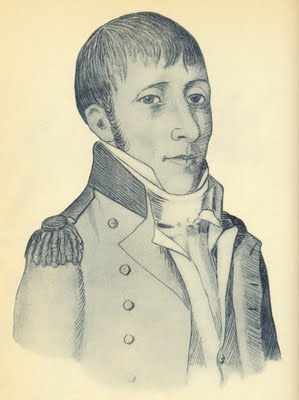2.1.1 The poetic work of Manuel de Zequeira (Havana, 1764 – 1846)

Manuel de Zequeira y Arango studied history and literature at the San Carlos Seminary, where he was a classmate and befriended Félix Varela. He came from a high-society family and served in the military in Spain and some of its colonies. A large representative of the ideology of the Creole class, he nevertheless embraced its economic and political alliance with the Spanish crown and implicitly aspired to recognition of the island as a true Spanish territory and not as a subordinate state. His later years were marked by skepticism, disenchantment, and dementia.
His work transcends versification and the so-called poetry of circumstance, characteristic of earlier periods, to reach lyric poetry as an end in itself, art for art’s sake and not as a tool for any other purpose, however valid that may be. His creative style is inscribed within the framework of neoclassicism, of which he constitutes the most refined expression on the island and a voice that has achieved renown in Latin America.
He sings an exalted song of vernacular nature, overcoming aspects of the natural landscape that can be considered common to countries and continents in other geographic regions. This does not imply political dissent but rather reflects an emerging identity. He developed a vast poetic output, and his best-known work, “A la Piña,” is cited as a pioneer of the national lyrical tradition. The following excerpt illustrates some of the distinctive characteristics of his poetics:
“From the fertile womb of Mother Vesta,
In an upright attitude he stands
The graceful pineapple dressed in splendor,
Full of rich finery.
Since birth, liberal Pomona
With the largest green tunic he protects her,
Until Ceres embroiders her dress
“With gold stars.”
The poem, which consists of twenty stanzas in total, is based on the metaphorical construction of the pineapple’s arrival at Olympus, where the gods drink its nectar, considered superior to ambrosia. While Greco-Latin motifs persist, alluding to the classical world itself and, at the same time, to the European world, as the latter was the heir to the entire Hellenic and Latin cultural tradition, the praise of a tropical fruit also indicates a vindication of the entire overseas universe and especially of the Island.
The author places a revealing stanza in the mouth of the goddess Venus: “Hail, happy soil, where / Mother Nature lavishes in abundance / The fragrant fumigable plant! / Hail happy Havana!” These verses reveal the subtle longing for recognition and revaluation of the island by Spain and, in general, by the European powers, but no separatist tendency is anticipated.
Zequeira was one of the most published poets of his time, leaving behind a prolific body of work of notable value from a strictly literary perspective. He also held public office as director of the Papel Periódico de la Havana (Havana Newspaper Paper) from 1800 to 1805, and also founded El Criticón de la Havana (Havana Criticón). In both, he devoted space to literature and criticism of customs, addressing fashion, vices, health, social gatherings, and other topics, with a moralizing approach but with a certain dose of irony that is part of the heritage of Creole humor.








